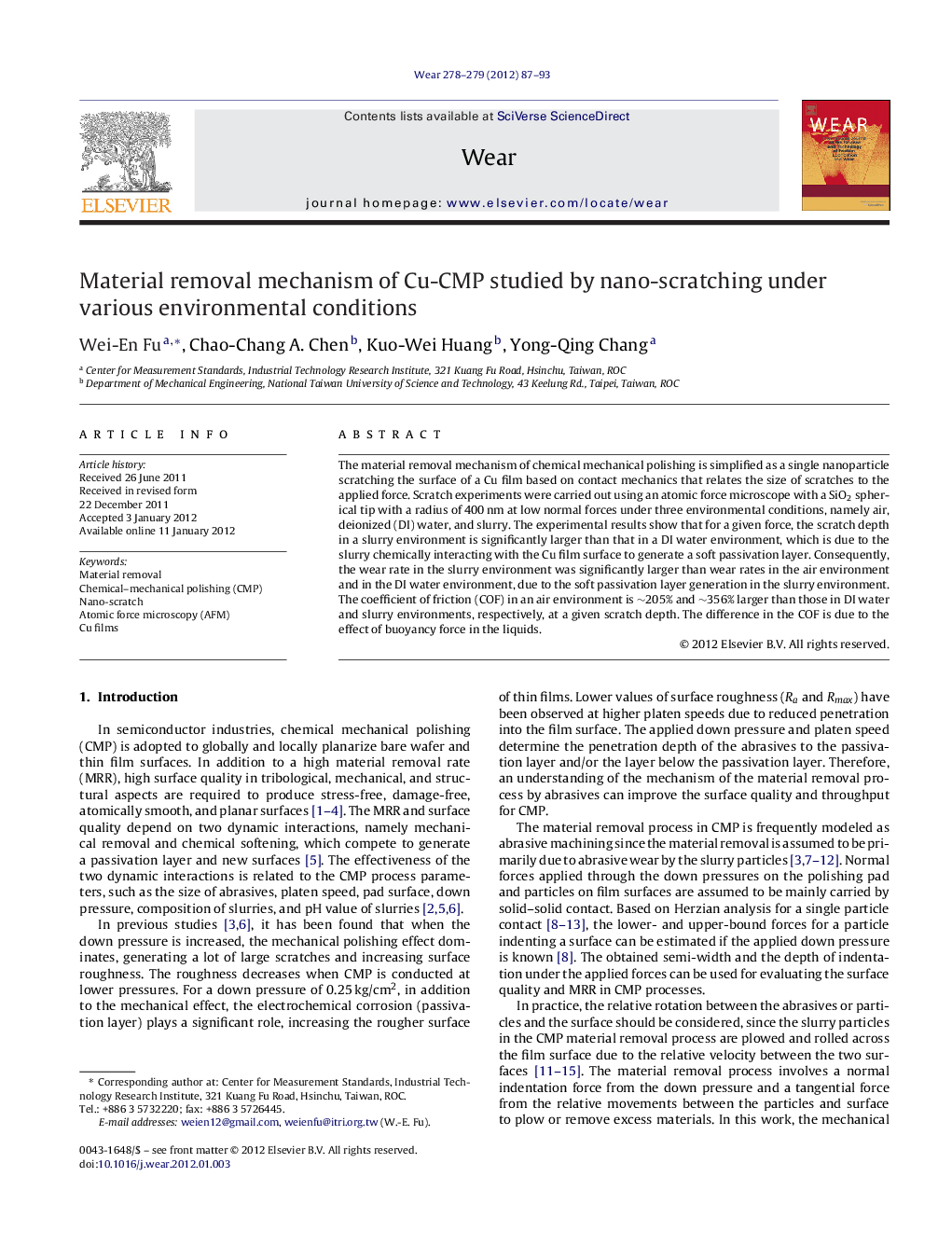| کد مقاله | کد نشریه | سال انتشار | مقاله انگلیسی | نسخه تمام متن |
|---|---|---|---|---|
| 617973 | 1455015 | 2012 | 7 صفحه PDF | دانلود رایگان |

The material removal mechanism of chemical mechanical polishing is simplified as a single nanoparticle scratching the surface of a Cu film based on contact mechanics that relates the size of scratches to the applied force. Scratch experiments were carried out using an atomic force microscope with a SiO2 spherical tip with a radius of 400 nm at low normal forces under three environmental conditions, namely air, deionized (DI) water, and slurry. The experimental results show that for a given force, the scratch depth in a slurry environment is significantly larger than that in a DI water environment, which is due to the slurry chemically interacting with the Cu film surface to generate a soft passivation layer. Consequently, the wear rate in the slurry environment was significantly larger than wear rates in the air environment and in the DI water environment, due to the soft passivation layer generation in the slurry environment. The coefficient of friction (COF) in an air environment is ∼205% and ∼356% larger than those in DI water and slurry environments, respectively, at a given scratch depth. The difference in the COF is due to the effect of buoyancy force in the liquids.
► AFM scratches with a spherical probe display cutting behavior of CMP material removal.
► The scratch depth in the slurry is ∼3 times larger than that in the DI water.
► Due to buoyancy force, the COF of scratch in air is larger than those in liquids.
► The COF in slurry is ∼58% smaller than that in the DI water at low scratch depths.
► Due to buoyancy force, wear rate in DI water is smaller than those in air and slurry.
Journal: Wear - Volumes 278–279, 8 March 2012, Pages 87–93